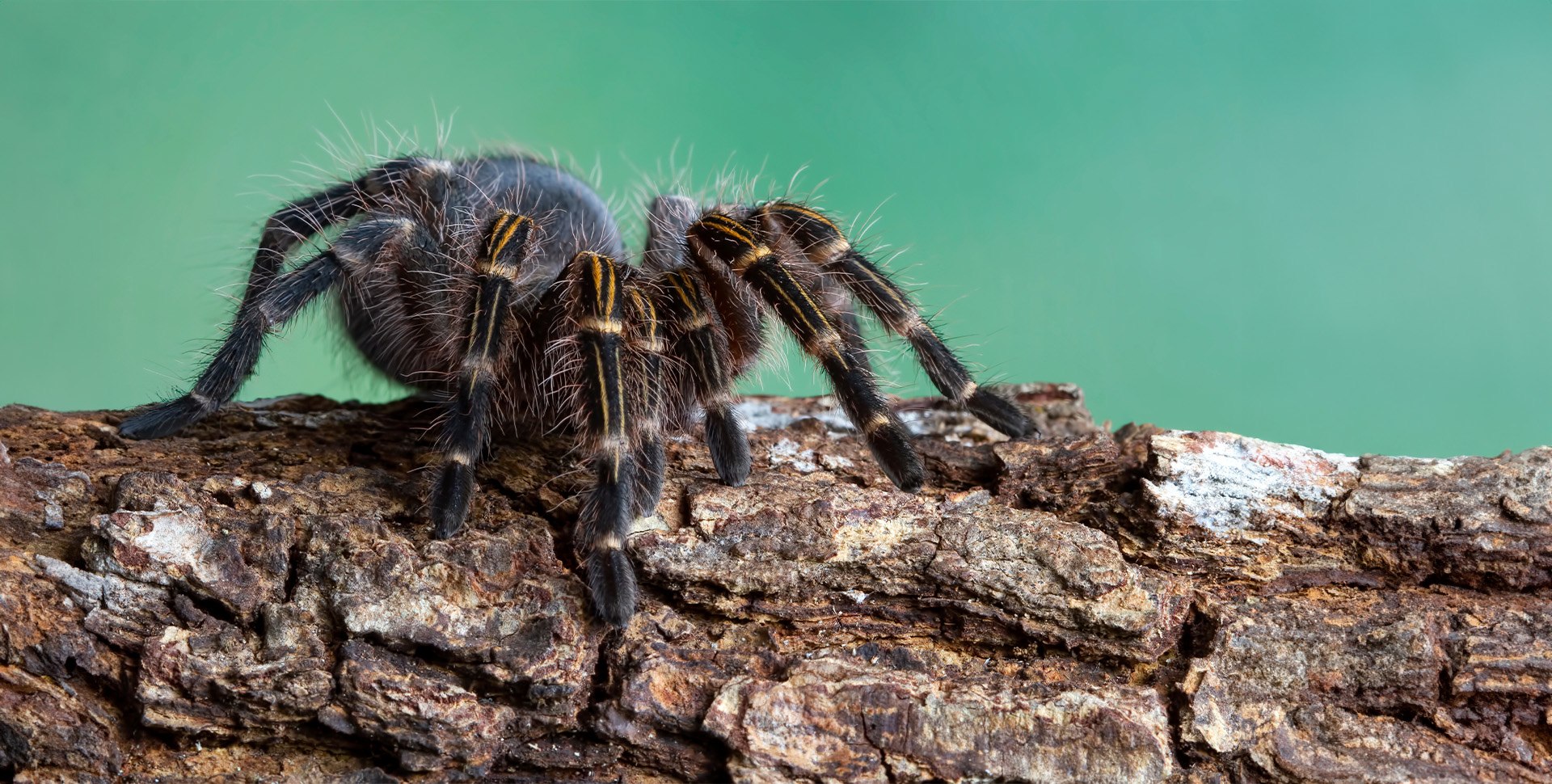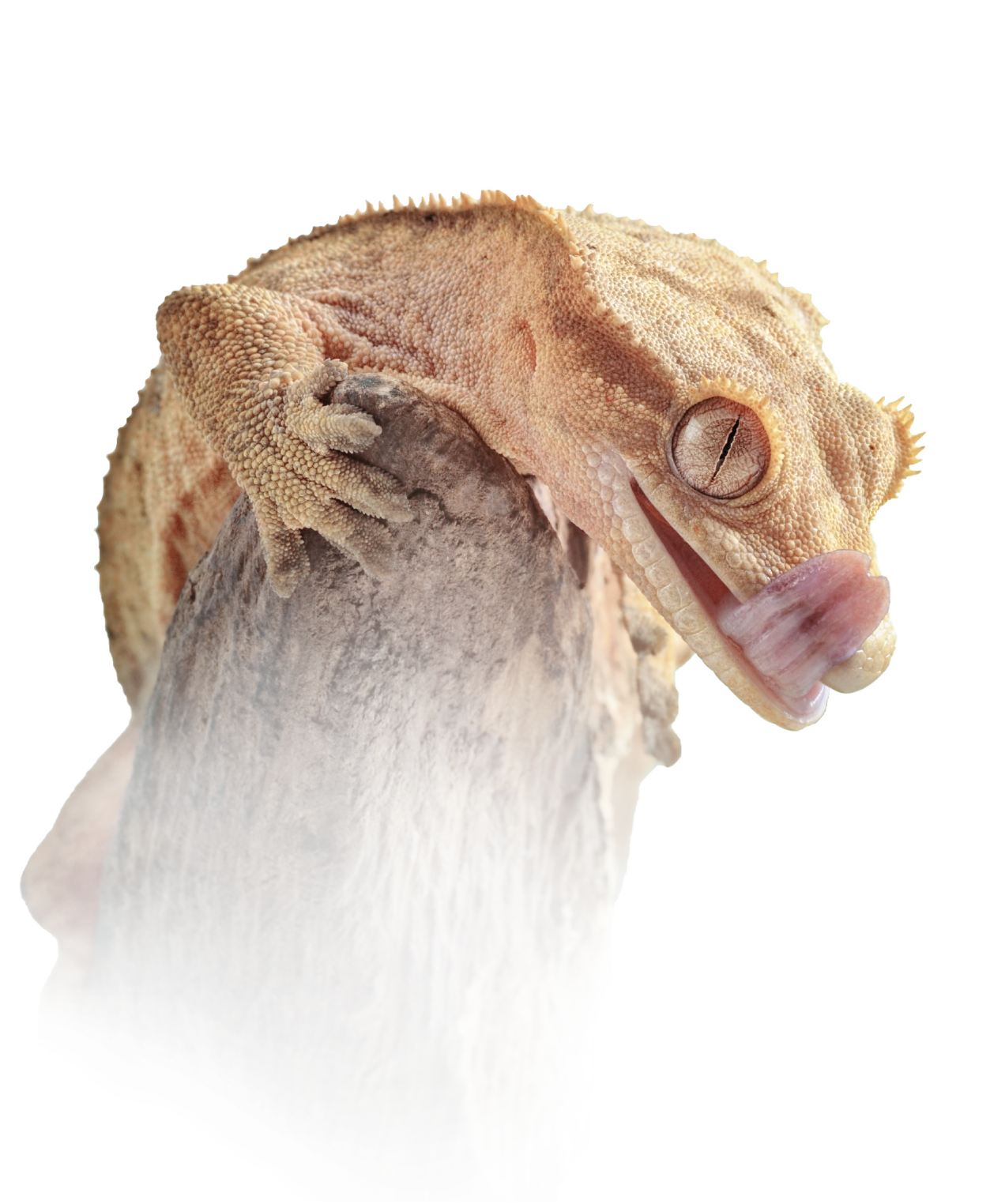Environment
Grasslands
Light
Normal Room Lighting
Temperature
65-78°F
Humidity
55-65%
Most Active
Nocturnal
Lifespan
5-25 years
Size:
Tarantula slings, or hatchlings, are incredibly small. Most terrestrial species are approximately .25 inches with the recommended purchase size of at least .75 inches. Like many species of spiders, females tend to be larger than males. Adult males grow to 6-7 inches while females can reach 7-8.5 inches.
Lifespan:
Similar to other tarantula species, Chaco Golden Knee Tarantula females have a much longer lifespan than males. In captivity, with proper care, males can live around 5 years while females can live 20-25 years.
Enclosure:
When designing your Chaco Golden Knee Tarantulas’ enclosure, make sure to remember that they are a terrestrial species from the grasslands that likes to burrow. This means the enclosure should be large enough to fit enough substrate for the tarantula to burrow safely. They will climb but can hurt themselves from falling. In order to avoid this, ensure that the substrate is tall enough and the enclosure is short enough. Adults can be kept in the equivalent of a 10 gallon tank but it is recommended to have more floor space than height.
Avoid using terrariums with a screen top as they can get their feet stuck in them if they are able to reach. Many hobbyists use plastic bins or acrylic tanks for their tarantulas to avoid this issue. Ensure that any enclosure chosen has adequate ventilation.
Temperature & Humidity:
Chaco Golden Knee Tarantulas thrive in room temperature settings with the ideal gradient at around 65-78 degrees Fahrenheit. Night time temperatures should not drop below 60 degrees. Make sure to monitor your enclosure temperatures for a couple days in a row before adding your tarantula. Remember that if you decide to run lights for live plants or display, the heat emitted from the lights can increase the temperature.
Humidity should be kept around 55-65 percent. Mist as needed to keep the proper humidity. One of the best ways to maintain humidity is by using a large amount of Golden Sphagnum Moss. Golden Sphagnum Moss is one of the highest quality mosses that holds humidity better than any other moss and is very mold resistant. When the tarantula is going through a molt, make sure to watch the tarantula to ensure it is not having issues. If the tarantula is molting near the water dish, you may want to increase the humidity. If the air humidity is too low, the tarantula can get stuck while molting.
Another great way to help control and maintain humidity while making your tarantula enclosure more natural, is adding more Mosses and live plants. Green Sphagnum Moss, Royal Pillow Moss, Sheet Moss, Pillow Moss, bromeliads, and ferns are all excellent at storing and maintaining humidity.
Substrate:
Chaco Golden Knee Tarantula enjoy digging and burrowing. The most commonly used substrate is Coconut Soil and peat moss. These soils are soft, keep humidity well, and are easy to burrow.
Hides:
Providing multiple safe hiding places for your tarantula is extremely important to their overall health. Baby tarantula spiderlings tend to burrow but adults often prefer premade hides and tunnels. Cork bark tunnels are one of the best options for tarantulas. Cork bark is lightweight, easy to cut, and all natural. These tunnels often become centerpieces for beautiful, natural enclosures.
Plants and commercially available hides can also be used to provide shade and shelter. The plants and leaves that make up the foliage can be fake or live depending on your personal preference.
Lighting:
There is no special lighting needed for Chaco Golden Knee Tarantulas. Normal room lighting can be used to create a normal day/night cycle. Only use the lights for a maximum of 12 hours as too much light can cause stress. If using terrarium lights, ensure that there are multiple areas of darkness that the tarantula can hide in.
Feeding:
Chaco Golden Knee Tarantula feeding frequency will depend on the size of the spider. Slings tend to eat more often, every 5-10 days, and feed on small insects such as pinhead crickets and flightless fruit flies. Adults will eat every 7-14 days and can be fed mealworms, crickets, and roaches. Make sure to remove any uneaten prey items within 4-8 hours. Note that when tarantulas are preparing to molt, they may not eat for weeks at a time.
Water:
Chaco Golden Knee Tarantulas need a shallow water dish. This dish will provide fresh water, as well as, keep the humidity of the enclosure slightly higher. This species is known for throwing substrate into the water dish so make sure to keep an eye on humidity levels and provide clean water.
Decor:
After the necessities, Chaco Golden Knee Tarantula enclosures can have any variety of decor that help to add enrichment. Cork bark and Natural Wood Tunnels act as a centerpiece and anchor for a variety of plants and other accessories. Natural Leaves, Mosses, and plants are also a great addition for general stimulation and enrichment with the added benefit of a naturalistic look.
Interesting Facts:
- The former species name, Grammostola aureostriata, was derived from the Latin word aureus “golden” and striatus “striped”. The current pulchripes is from the Latin pulchra “beautiful” and pes “foot”.
- All tarantulas undergo molting (or ecdysis) when they are growing and need a larger exoskeleton. During this process, the tarantula can regenerate missing appendages!
- Even with eight eyes, these tarantulas have poor eyesight. They sense their environment using the setae, bristles/hair, all over their bodies to feel vibrations and sense chemical changes.
- Chaco Golden Knee Tarantula are known for burrowing and are notorious for filling their water dishes with substrate while rearranging their enclosure.
- Due to their substantial size, Chaco Golden Knee Tarantula have quite large fangs. However, bites are very uncommon and their venom is not harmful to humans.




